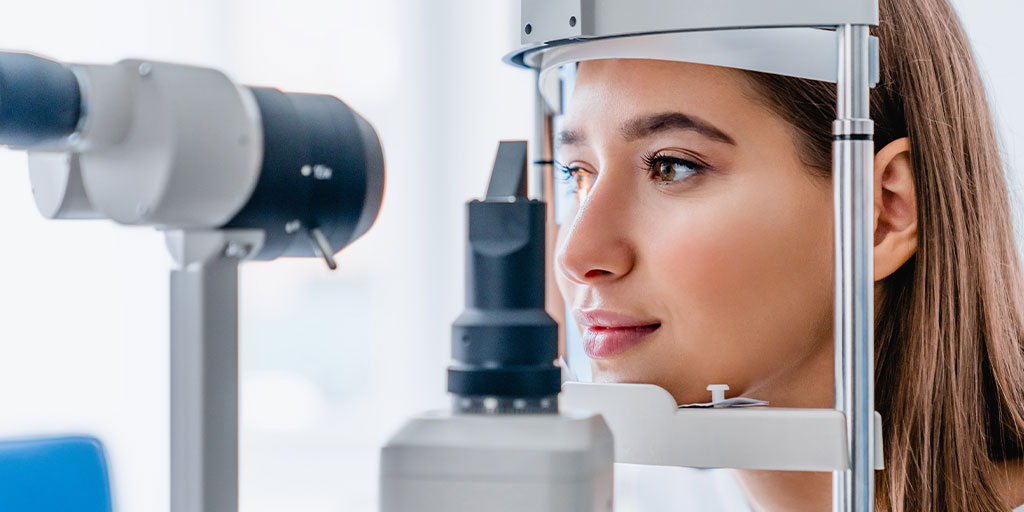Medical vs. Routine Eye Exams

Most people who schedule eye exams do so for one of two reasons: It's time for a routine exam, or you require a medical exam for a specific reason. While both medical and routine eye exams cover many of the same bases, doctors perform them for different reasons. During a routine exam, your doctor is looking for a broad spectrum of possible issues. During a medical exam, they are assessing a specific diagnosis based on reported symptoms.
Classifying a routine eye exam as opposed to a medical eye exam is also important to your insurance company. The type of coverage for each differs depending on your provider and your insurance plan. It's important to understand what type of services are covered in your policy for medical versus routine eye exams.
Medical vs. Routine Eye Exams: What is the Difference?
There are basic differences between medical and routine eye exams that set them apart.
What Is a Routine Eye Exam?
A routine eye exam is an office visit in which the doctor performs three primary assessments:
- Vision check
- Medical condition screening
- Glasses/contact lenses prescription renewal
A routine eye exam may result in a diagnosis such as nearsightedness, farsightedness or astigmatism.
Vision insurance plans provide coverage for routine exams, glasses and contact lenses. They may also provide discounts for doctor's fees. The doctor bills the eye exam to your insurer. By law, Medicare does not pay for routine vision exams.
What Is a Medical Eye Exam?
A medical eye exam occurs when a doctor examines the symptoms you are experiencing that affect your vision or comfort. For instance, if you have chronic eye pain or you constantly see flashes of light, the doctor will investigate the causes of your symptoms.
The exam may result in a medical diagnosis such as conjunctivitis, dry eye, glaucoma or cataracts. Depending on your policy, your medical insurance may cover a medical exam but not if it is a routine eye exam. Medical examinations for eye care, assessment of an eye condition or follow-up on an existing medical condition are billed to your medical insurance plan.
Does Vision Insurance Cover Eye Exams?
Vision insurance, including both traditional health policies and wellness plans, covers most, but usually not all, of your expenses. Coverage varies depending on the type of vision insurance policy or vision benefits plan you choose.
Routine Eye Exam Insurance Coverage
Insurance companies that cover routine exams typically put a limit on the number of exams they cover annually. Depending on the plan, they will pay all or part of your exam cost and give you a timeline of how often you can see your eye doctor.
If you have a standard vision insurance policy, you are responsible for the copay. The remainder of your routine eye exam cost is covered. A typical vision insurance copay ranges from around 10 to 40 dollars depending on the type of coverage in your insurance plan.
Medical Eye Exam Insurance Coverage
A medical eye exam is carried out to diagnose conditions such as conjunctivitis, glaucoma, age-related macular degeneration or cataracts. These are more serious conditions that require further medical attention or surgical care. Depending on your health insurance policy, most will cover eye exams if you have or are suspected to have an eye condition.
Keep in mind that the copay for each type of exam varies between different policies. If you are still unsure about what your insurance policy will cover, check the statement of benefits on your plan or call and ask your provider.
Schedule an Eye Exam Today
Contact Gulf Coast Vision Center today at one of our Pace, Milton, Crestview or Pensacola locations to schedule a comprehensive eye exam.
